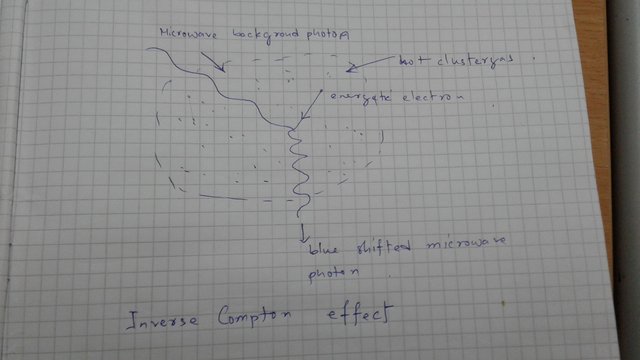Radio Astrophysics #1 Compton effect and Inverse Compton effect
Today I am going to write about Compton effect and inverse Compton effect. Most of the students of physics and chemistry is familiar with the first one but I assure you both of them are equally interesting. So, let's jump in.
Compton effect

Compton effect was discovered by an American physicist Arthur Holly Compton and this effect has huge importance in quantum mechanics. So, what is this effect? Well, when a photon with high energy hit an electron (initially at rest), the photon loses energy. The electron gets this energy lost by the photon and starts to move. So, the energy lost by the photon is now the kinetic energy of the electron. You can ask me what happens to the photon? It scatters away with an angle and as it lost some energy, its frequency decrease or in other words wavelength increase. This phenomenon is known as the Compton effect. Here, is the equation which describes the Compton effect-


Inverse Compton effect
This effect is also known as the Sunyaev-Zeldovich effect. So, as the heading goes it is inverse of the Compton effect. In Compton effect, the photon had a very high energy and electron was in rest but here quiet opposite. This effect is not that known like the Compton effect cause its application is mostly in the interstellar medium. So, photons can belong to cold sources. For example, 2.7 K background. It can interact with a hot source like a cluster of galaxies and these galaxies have a lot of free electrons with a temperature of 107 Kelvin. So, the effect will happen complete opposite to the Compton effect and the photon from a higher wavelength will shift to a lower wavelength. In Compton effect energy was lost by the photon and gained by the electron but here energy is lost by the electron and gained by the photon.

 e is the linear density of the electron.
e is the linear density of the electron.
This effect is very useful.For example, comparing this result with the x-ray emission map we can easily find the distance without taking redshift into account and can also be used to determine the Hubble's constant. That's all for today. Have a nice weekend.
Reference
1. Kristen Rohlfs, Tools of radio astronomy
2. Dejan Urosevic, Introduction to the theory of radio astronomy
3. Mirjana Vukicevic, Theoretical Astrophysics



This post has been voted on by the SteemSTEM curation team and voting trail in collaboration with @curie.
If you appreciate the work we are doing then consider voting both projects for witness by selecting stem.witness and curie!
For additional information please join us on the SteemSTEM discord and to get to know the rest of the community!
Congratulations @rifkan! You have completed the following achievement on the Steem blockchain and have been rewarded with new badge(s) :
Click here to view your Board of Honor
If you no longer want to receive notifications, reply to this comment with the word
STOPTo support your work, I also upvoted your post!
Do not miss the last post from @steemitboard: